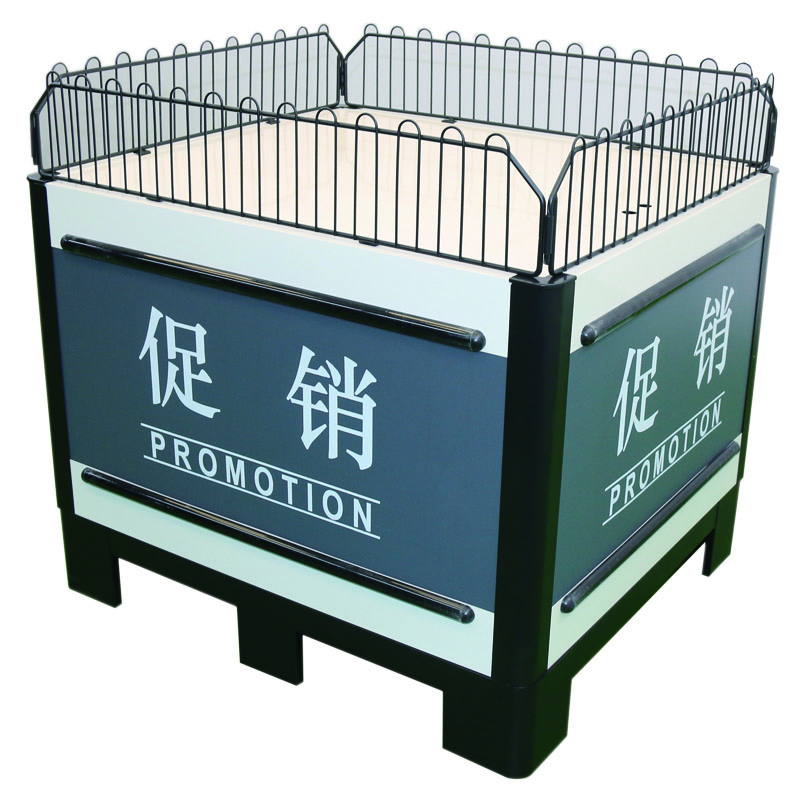

-
 National service hotline
National service hotline
- 400-082-1188
- What is the load-bearing capacity of steel and wood shelves
- Why is the freshness preservation function of the shelves in the fresh food area good
- Why do many supermarket owners choose Zhongdao double-sided shelves
- What are the advantages of a liquor cabinet
- What are the advantages of steel and wood shelves
What is the load-bearing capacity of steel and wood shelves
source:www.pinsuan.cn | Release time:2025年06月17日1、 Core factors affecting load-bearing capacity
1. Material specifications and strength
Metal frame:
Steel grade: Q235B (yield strength ≥ 235MPa) is a common choice. If higher load-bearing capacity is required, Q345B (yield strength ≥ 345MPa) can be selected.
Wall thickness: The wall thickness of light shelving steel pipes is 0.8~1.2mm, the wall thickness of medium shelving square pipes is 1.5~2.0mm, and the wall thickness of heavy-duty shelving channel steel is ≥ 3.0mm.
Wooden plywood:
Material type: solid wood multi-layer board (waterproof and moisture-proof)>solid wood particle board>density board (particleboard) for load-bearing from high to low.
Thickness and span: The larger the span of the laminated board (such as 1.2 meters long), the thicker the thickness (such as when the span is 1.2 meters, the thickness of the laminated board should be ≥ 25mm).
2. Structural design and connection process
Frame structure:
Column spacing: The smaller the spacing (such as ≤ 1 meter), the stronger the load-bearing capacity of the laminated board (for example, when the column spacing is 0.8 meters, a single layer of medium-sized shelves can bear 150kg; when the spacing is 1.2 meters, the load-bearing capacity drops to 100kg).
Strengthening rib design: Metal crossbeams or triangular supports are installed below the heavy-duty shelf shelves to enhance their bending resistance.
Connection method:
The connection between metal and wood: fixed with bolts (more stable than buckle connection), with a screw spacing of ≤ 30cm (to avoid loosening of the plywood).
3. Installation and usage environment
Ground flatness: If the ground is inclined by more than 3 ° during installation, it will cause excessive force on one side (a decrease of 10%~20% in load-bearing capacity), and it needs to be calibrated with a level and padded with iron plates.
Environmental humidity: Wooden plywood is prone to moisture and deformation in environments with humidity greater than 80% (weight loss of about 15%), and waterproof multi-layer plywood or regular ventilation should be selected.
2、 Typical types of load-bearing capacity and application scenarios
1. Lightweight steel and wood shelves (30-80kg/layer)
Structural features:
The metal frame is made of thin-walled steel pipes (diameter 25-30mm, wall thickness 0.8-1.2mm), and the layer board is 15-18mm density board (surface covered with wood grain paper).
Application scenarios:
Supermarket snack area: Single layer storage of 20-30 bags of potato chips (0.5kg per bag), with a total weight of approximately 15kg, far below the load-bearing limit.
Clothing store: The hanging pole (made of metal material) can bear a weight of 15-20 kg (can hold 50~80 summer clothes), and the layer board can hold folded clothes (single layer can bear 30~50kg).
2. Medium sized steel and wood shelves (80~200kg/layer)
Structural features:
The frame is made of 30 × 30 × 1.5mm square tubes, and the layer board is 18-25mm solid wood multi-layer board (with waterproof adhesive bonding). 2-3 metal crossbeams are provided below the layer board for support.
Application scenarios:
Supermarket grain and oil area: Place 10 barrels of 5L edible oil in a single layer (with a weight of 4.7kg per barrel and a total weight of 47kg), and reserve 50% of the safe load-bearing capacity (design load-bearing capacity of 100kg/layer).
Auto parts warehouse: stores car parts boxes (each box weighs 15kg), with 8 boxes placed in a single layer (total weight 120kg), using shelves with a load-bearing capacity of 150kg per layer.
3. Heavy duty steel and wood shelves (200~500kg/layer)
Structural features:
The frame is made of 50 × 50 × 3mm channel steel, and the layer board is 25-40mm solid wood thick plate (or steel wood composite board: bottom steel plate+surface wooden board). The columns and layer boards are fixed with M10 bolts.
Application scenarios:
Industrial warehouse: storing mechanical parts boxes (single box weight 50kg), with 4 boxes placed in a single layer (total weight 200kg), using shelves with a load-bearing capacity of 300kg/layer (safety factor 1.5 times).
Building materials market: Store ceramic tiles (each box weighs 25kg), with 8 boxes placed in a single layer (total weight 200kg), and a layer board span of ≤ 1 meter (to avoid bending).
3、 Optimization of Load Capacity and Safety Standards
1. Design optimization strategy
Deck span control:
The span of light-duty shelves is ≤ 0.8 meters (such as 0.6 meters wide shelves), the span of medium-sized shelves is ≤ 1.2 meters, and the span of heavy-duty shelves is ≤ 1.5 meters (the larger the span, the more significant the load reduction).
Reinforcement installation:
When the span of the laminated board is greater than 1 meter, installing metal "cross" shaped crossbeams below the laminated board (spacing ≤ 50cm) can increase the load-bearing capacity by 20% to 30%.
2. Use safety regulations
Weight limit sign: The shelves should be prominently marked with "Single layer load-bearing capacity XXkg" to avoid overloading (overloading may cause layer board breakage or frame deformation).
Principle of goods placement:
Uniform distribution: Avoid stacking goods on one side of the laminated board (eccentricity ≤ 1/3 of the width of the laminated board).
Heavy goods placement layer: The bottom layer stores heavy goods (such as 20kg barrels of raw materials), while the top layer stores light goods (such as cardboard packaging), lowering the center of gravity to prevent tipping.
Regular inspection: Check whether the wooden plywood is cracked and whether the welding points of the metal frame are detached every quarter. If any deformation is found, replace it in a timely manner (repair is required if the deflection of the plywood is greater than 5mm).

 Micro signal:
Micro signal:

 official account
official account
 applet
applet
 wechat
wechat
 contact
contact
 phone
phone